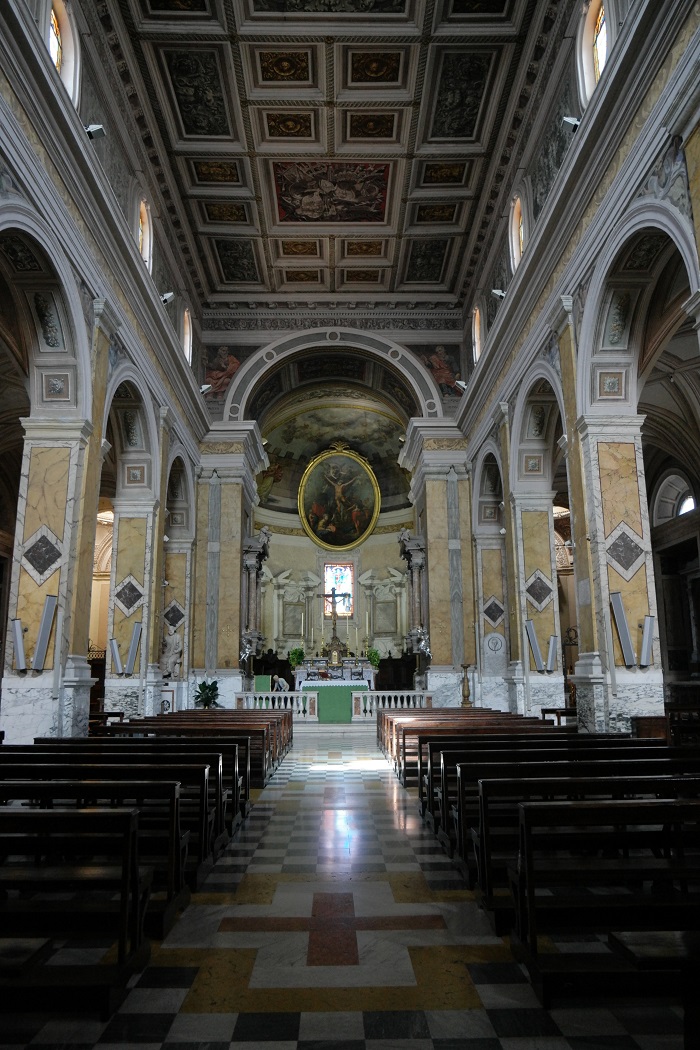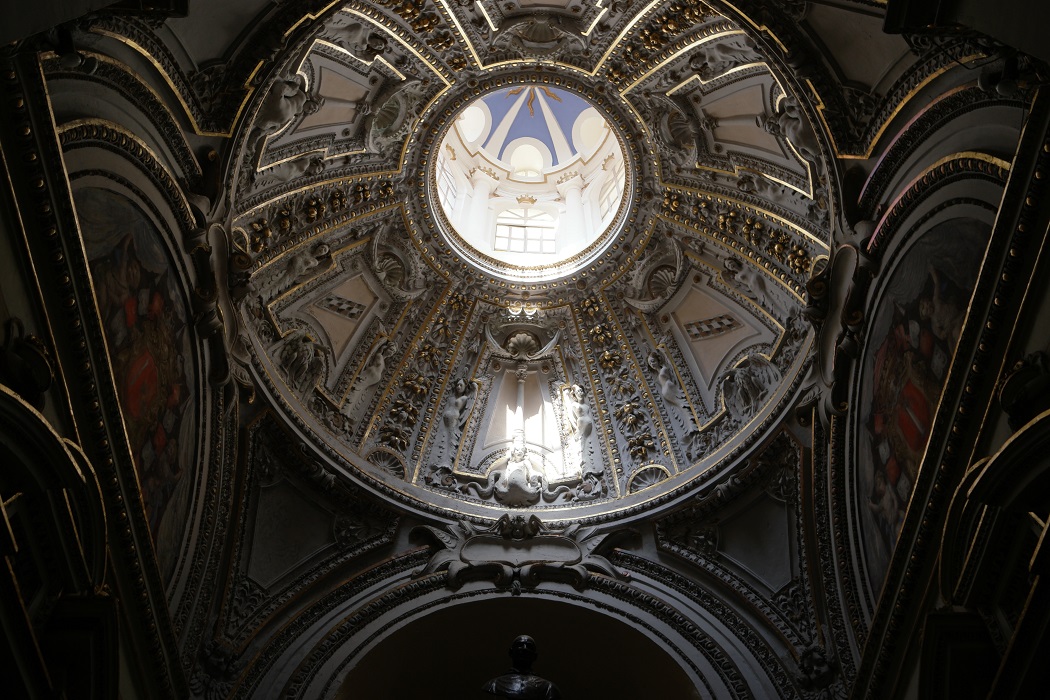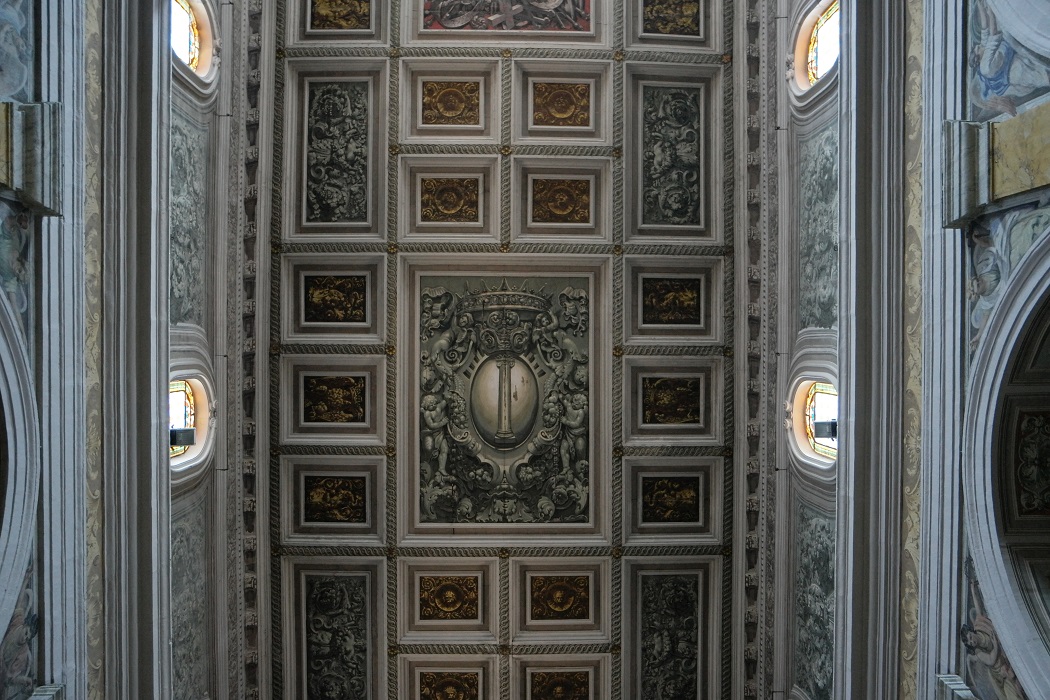
The original Church of Saint Andrew Apostle in Paliano was built in 1224 and then has been completely rebuilt by Prince Marcantonio Colonna II.
From 1569 the prince spent his time to the urban reorganization of Paliano building his Palace Colonna. The prince died in 1584 and at that time in the church there was only an underground crypt especially for the burial of the Colonna family.
The family tomb was finished in the early seventeenth century by Philip I, who transformed the church into a huge mausoleum and moved some bodies there.
The facade and the final internal arrangement dates from the late seventeenth century under the care of the architect Antonio Del Grande.
The Collegiate Church of Saint Andrew Apostle has three naves with side chapels and the main apse with a portrait of St. Andrew painted by Tommaso Conca in 1789. The ceiling of the nave is coffered Baroque.
In the left aisle is the baptismal font with a painting of Giacome Lisia.
The chapel of Saint Andrew was dedicated to the wife of Philip I and also was dedicated to St. Charles Borromeo, St. Filippo Neri and Saint Lucrezia.
Inside there is a cupola with the coats of arms of Colonna and Tomacelli families and a wooden sculpture of St. Andrew the Apostle with the cross behind.
In the chapel dedicated to Our Lady of Zancati is preserved a wonderful fresco found in the cave chapel in Zancati, in Paliano countryside.









Follow us